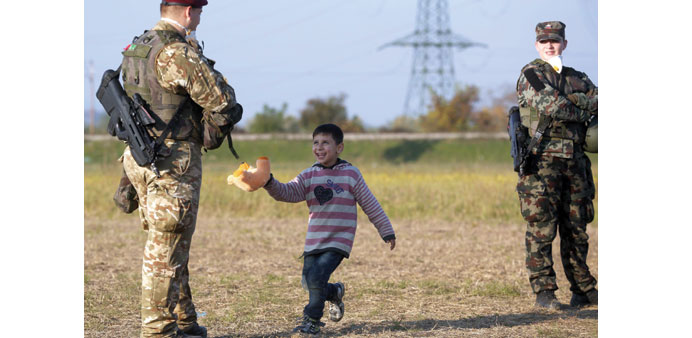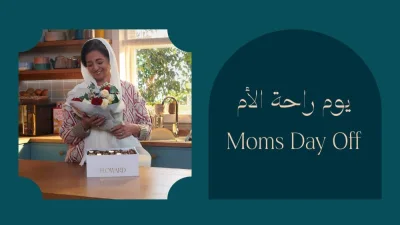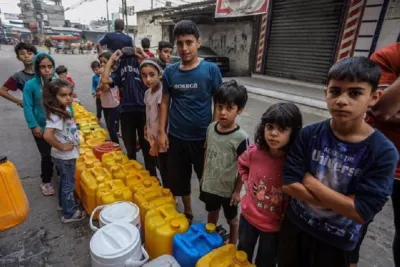A migrant boy offers his teddy bear to a Slovenian soldier as migrants and refugees wait in a field on their way to a refugee camp after crossing the Croatian-Slovenian border near Rigonce, Slovenia.
AFP
Brussels
Europe’s worst migration crisis since World War II risks triggering “tectonic changes”, a top EU official warned yesterday, as figures showed more than 700,000 newcomers reached the continent’s Mediterranean shores so far this year.
Leaders of France and Germany were due to discuss the crisis which has also prompted a spat between the premier of Germany’s Bavaria state and neighbouring Austria over its handling of migrants.
“The situation will deteriorate even further,” European Council president Donald Tusk said, warning of a “new wave of refugees (arriving) from Aleppo and other Syrian regions under Russian bombardment”.
“I have no doubt that this challenge has the potential to change the European Union we have built,” he told the European Parliament in Strasbourg.
“And what is even more dangerous, it has the potential to create tectonic changes in the European political landscape. And these are not changes for the better.”
Meanwhile, European Commission president Jean-Claude Juncker slammed EU member states for only providing less than half of the experts pledged to the bloc’s Frontex border agency in migrant hotspots Greece and Italy.
“Member states have been moving slowly at a time when they should be running,” he said.
Of the 775 border guards needed, EU countries have only provided 326 over the past month, Juncker said, adding that many bloc members had also failed so far to keep their promises of financial support.
The stinging criticism came just days after the EU vowed to help set up 100,000 places in reception centres in Greece and along the route through the Balkans.
The move is part of a 17-point action plan devised with the countries most affected by the crisis.
French President Francois Hollande and German Chancellor Angela Merkel are to hold talks on the refugee crisis and the Syrian conflict in Paris.
More than half of this year’s arrivals in Europe were from Syria, followed by Afghanistan and Iraq, the UN refugee agency said yesterday.
Some 562,355 people desperately fleeing war and misery reached Greece’s shores, while around 140,000 arrived in Italy since January.
Children made up 20% of the arrivals, the agency said.
Of these, at least 3,210 people have either died or gone missing as they made the journey plagued with danger.
A total of 85% were from what the UN described as the world’s 10 main refugee-producing countries.
As Europe struggles to deal with the crisis, the flow shows no sign of abating despite worsening weather conditions, according to the International Organization for Migration, which reported the arrival of 5,239 people in Greece on Saturday and 4,199 on Sunday.
“Because of the bad weather and rough seas, IOM staff report that tracking migrant boats at sea is becoming more difficult and more aerial surveillance is being implemented,” the IOM said in a statement yesterday.
As a majority of migrants seek to reach northern Europe, the influx has overwhelmed key transit countries along the migrant trail, leading through the western Balkans and central Europe.
More than 83,600 people have arrived in EU state Slovenia since mid-October after fellow bloc member Hungary shut its Croatian border with a razor-wire fence to migrants, police said yesterday.
The nation of 2mn people reiterated its warning that it was also considering building a fence if the newly announced EU plans aimed at tackling the crisis failed to produce quick results.
“If the situation worsens and the Brussels action plan is not fulfilled, then Slovenia has several scenarios prepared, (including) the installation of a fence guarded by forces,” said Slovenian Foreign Minister Karl Erjavec.
The border pressures have prompted sharp exchanges between Ljubljana and Zagreb in recent days, with each side accusing the other of failing to properly manage the flow of migrants.
In particular, tensions have been rising in the small Slovenian border village of Rigonce, where residents have grown increasingly disgruntled at the sight of thousands of migrants walking across the border with Croatia.



